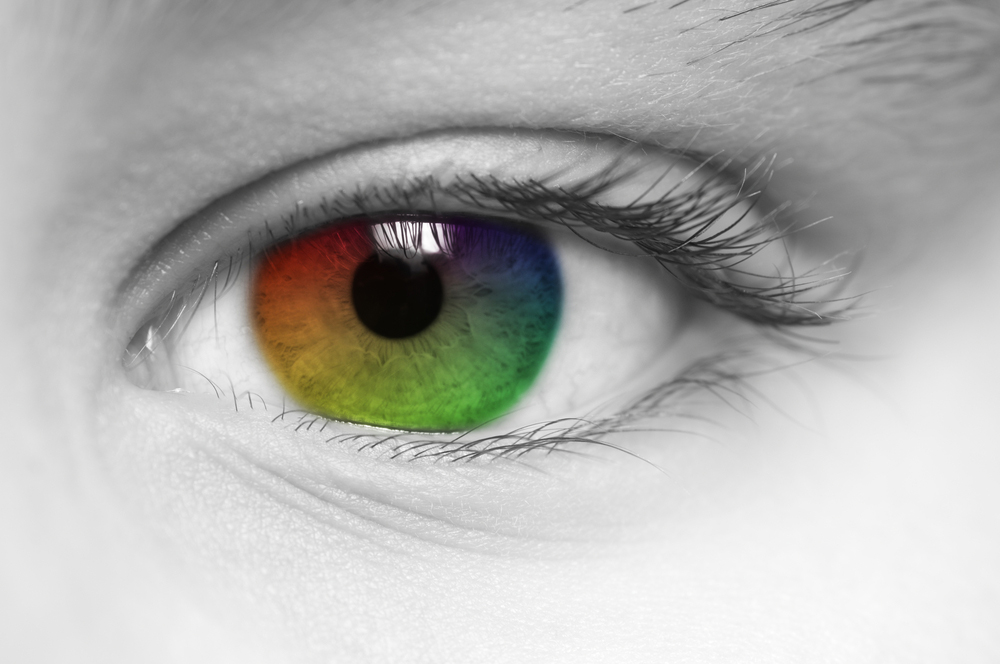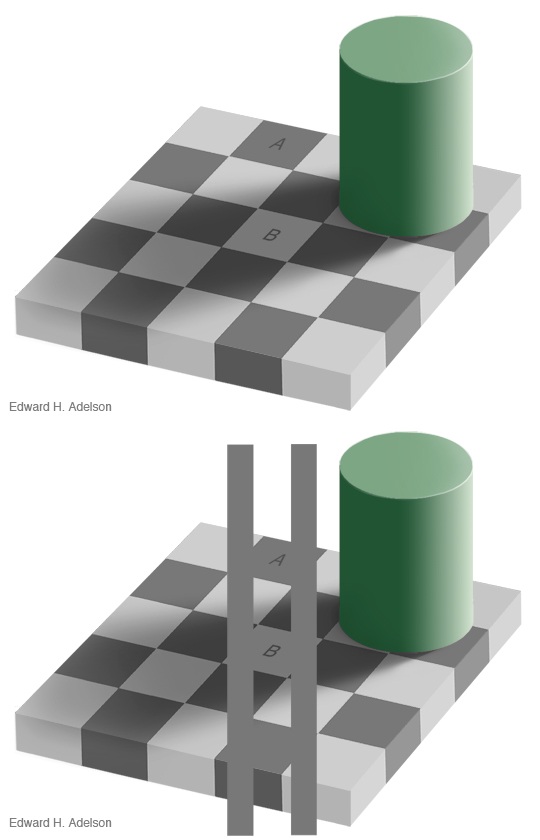10 Everyday Things that Cause Brain Farts
Intro

Our brains balk at the thought of four-dimensional hypercubes, quantum mechanics or an infinite universe, and understandably so. But our gray matter is generally adept at processing sensory data from the mundane objects and experiences of daily life. However, there are glaring exceptions. Here are 10 things that unexpectedly throw our brains for a loop, revealing some of the bizarre quirks in their structure and function that usually manage to slip under the radar.
Doors

Do you ever walk into a room with some purpose in mind — to get something, perhaps? — only to completely forget what that purpose was? Turns out, doors themselves are to blame for these strange memory lapses.
Psychologists at the University of Notre Dame have discovered that passing through a doorway triggers what's known as an "event boundary" in the mind, separating one set of thoughts and memories from the next, just as exiting through a doorway signals the end of a scene in a movie. Your brain files away the thoughts you had in the previous room, and prepares a blank slate for the new locale. Mental event boundaries usually help us organize our thoughts and memories as we move through the continuous and dynamic world, but when we're trying to remember that thing we came in here to do… or get… or maybe find… they can be frustrating indeed.
Aaaaaand scene!
The moon

Usually such a pleasant nighttime companion, the moon occasionally screws with our heads. When it dips low in the sky, it appears much larger than when it is overhead, even though it's actually the same size. Known as the moon illusion, or Ponzo illusion, this misconception is another example of an everyday brain fart.
The most likely cause of the moon illusion is that we're used to seeing clouds just a few miles above us, while we know that clouds on the horizon can be hundreds of miles distant. If a cloud on the horizon is the same size as clouds normally are overhead despite its great distance, we think, "that cloud is freaking huge." And because the moon near the horizon is the same size as it normally is overhead, we perceive it as being much larger, too.
Beeps

What's worse: the whine of a digital alarm clock, the sound of a truck backing up, or the shrill reminders that your smoke detector is running out of batteries? Fine, they're all terrible. Beeps are practically the soundtrack of the modern world, but they're extremely irritating because each one induces a tiny brain fart.
Get the world’s most fascinating discoveries delivered straight to your inbox.
We didn't evolve hearing beeps, so we struggle to grasp them. Natural sounds are created from a transfer of energy, often from one object striking another, such as a stick hitting a drum. In that case, energy is transferred into the drum and then gradually dissipates, causing the sound to decay over time. Our perceptual system has evolved to use that decay to understand the event — to figure out what made the sound, and where it came from. Beep sounds, on the other hand, are like cars driving at 60 mph then suddenly hitting a wall, as opposed to gradually slowing to a stop. The sound doesn't change over time, and it doesn't fade away, so our brains are baffled about what they are and where they're coming from.
Photos

Just as we didn't evolve hearing beeps, we also didn't evolve seeing photographs. Like your grandmother learning to use the Internet but never developing an intuitive feel for it, we consciously "get" photographs, but our subconscious brains can't quite separate them from the objects or people pictured. Case in point: Studies show that people are much less accurate when throwing darts at pictures of JFK, babies, or people they like than when throwing darts at Hitler or their worst enemy. Another study found that people start to sweat profusely when asked to cut up photographs of their cherished childhood possessions. Lacking millions of years of practice, our brains fail when it comes to separating appearance from reality.
Red-green

There is a color called red-green. It is as vibrant as red-blue — the color we call purple — but we don't have a word for it, because we can't see it. Red-green hits a blind spot in our brains.
The limitation results from the way we perceive color in the first place. Cells in the retina called "opponent neurons" fire when stimulated by incoming red light, and this flurry of activity tells the brain we're looking at something red. Those same opponent neurons are inhibited by green light, and the absence of activity tells the brain we're seeing green. While most colors induce a mixture of effects in the neurons, which our brains can decode, red light exactly cancels the effect of green light, so we can never perceive those colors coming from the same place.
Well, almost never. Under special conditions in the laboratory, eyes can be forced to perceive both red and green light simultaneously. People lucky enough to participate in these vision experiments say the unforgettable experience is like seeing the color purple for the first time.
Wheels

Ever noticed how car wheels can look like they're spinning backwards in the movies? This is because movie cameras capture still images of a scene at a finite rate, and the brain fills in the gaps between these images by creating the illusion of continuous motion between the similar frames. If the wheel rotates most of the way around between one frame and the next, the most obvious direction of motion for the brain to pick up on is backwards, since this direction suggests the minimal difference between the two frames.
However, wheels can also appear to spin backwards in real life, too, which is weirder. The leading theory to explain the "continuous wagon wheel illusion," as it is known, holds that the brain's motion perception system samples its input as a series of discrete snapshots, much like a movie camera. So our brains are effectively filming their own movies of the external world, but not always at a fast enough frame rate to perceive the wheels in the scene spinning the right way. [Why It Took so Long to Invent the Wheel]
Bright lights

Bright lights make one person in four sneeze. Are they allergic to sunbeams? Doubtful. It's called the photic sneeze reflex, and it's a little-understood mental mix-up. Generally sneezing (or the "sternutation reflex") happens involuntarily when an irritant enters the nose. Another automatic reaction we often experience is the pupillary light reflex, wherein our pupils shrink when stimulated by a bright light. All reflexes require that a message get sent along complex neuronal pathways in the brain. It's conceivable that mixed messages could cause unintended results. Cross the sneeze reflex with the pupillary light reflex and you might get both responses to the singe stimulus of a bright light. Scientists can't fully explain this phenomenon, which is also known as autosomal dominant compelling helio-opthalmic outburst, or ACHOO, syndrome. (Seriously.)
Wide open spaces

When traversing the desert, a plain or a thick forest — terrains devoid of landmarks — people walk in circles. Experiments on blindfolded people show that, lacking external reference points, we curve around in loops as tight as 66 feet (20 meters) in diameter, all the while believing we are walking in straight lines. Turns out, it isn't because one leg is longer or stronger than the other. Wide open spaces literally throw the brain for a loop.
According to researchers at the Max Planck Institute for Biological Cybergenetics in Germany, loopy paths follow from a walker's changing sense of "straight ahead." With every step, a small deviation arises in the brain's vestibular (balance-maintaining) system, or perhaps the propioceptive (body awareness) system, and is added to the person's cognitive sense of what's straight. These deviations accumulate to send that individual veering around in ever tighter circles as time goes on. The little brain farts aren't allowed to accumulate when we can regularly recalibrate our sense of direction using a nearby building or mountain.
Shadows

The way we deal with shadows is an example of our brains trying to be helpful, but shooting themselves in the… foot? When attempting to determine the color of a surface, our brains know that shadows make surfaces look darker than they normally are. We compensate by automatically interpreting shadowy surfaces as being lighter than they technically appear to the eye. However, because we have no control over this adjustment process, we aren't able to determine how dark a shadow is really rendering something, and this can be problematic.
The brain fart is highlighted by this optical illusion created by Edward Adelson, a professor of vision science at MIT. On the checkerboard, tile A looks much darker than tile B. Remarkably, as seen in the revised lower image, A and B are actually exactly the same color. We interpret square B, a light checkerboard tile that is cast in shadow, as being lighter than square A, a dark checkerboard tile, despite the fact that the shadow has rendered B just as dark as A. Silly brain!
Phones

Do you ever feel your phone vibrating in your pocket or purse, only to retrieve it and be met by eerie, black-screened lifelessness? If, like most people, you occasionally experience these "phantom vibrations," it turns out it's because your brain is jumping to wrong conclusions in an attempt to make sense of the chaos that is your life.
Brains are bombarded with sensory data; they must filter out the useless noise, and pick up on the important signals. In prehistoric times we would have constantly misinterpreted curvy sticks in the corny of our vision for snakes. Today, most of us are techno-centric , and so our brains misinterpret everything from the rustle of clothing to the growling of a stomach, jumping to the conclusion that we're getting a call or text, and actually causing us to hallucinate a full-on phone vibration.
Natalie Wolchover was a staff writer for Live Science from 2010 to 2012 and is currently a senior physics writer and editor for Quanta Magazine. She holds a bachelor's degree in physics from Tufts University and has studied physics at the University of California, Berkeley. Along with the staff of Quanta, Wolchover won the 2022 Pulitzer Prize for explanatory writing for her work on the building of the James Webb Space Telescope. Her work has also appeared in the The Best American Science and Nature Writing and The Best Writing on Mathematics, Nature, The New Yorker and Popular Science. She was the 2016 winner of the Evert Clark/Seth Payne Award, an annual prize for young science journalists, as well as the winner of the 2017 Science Communication Award for the American Institute of Physics.

